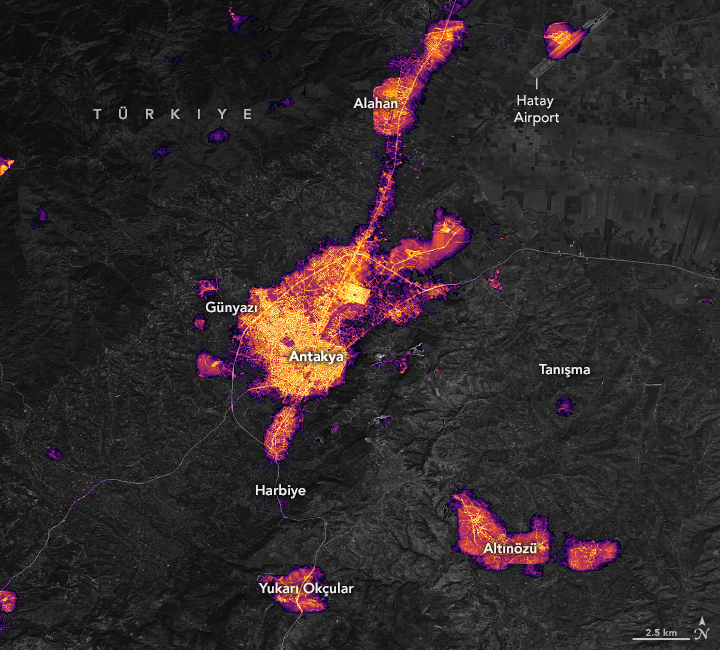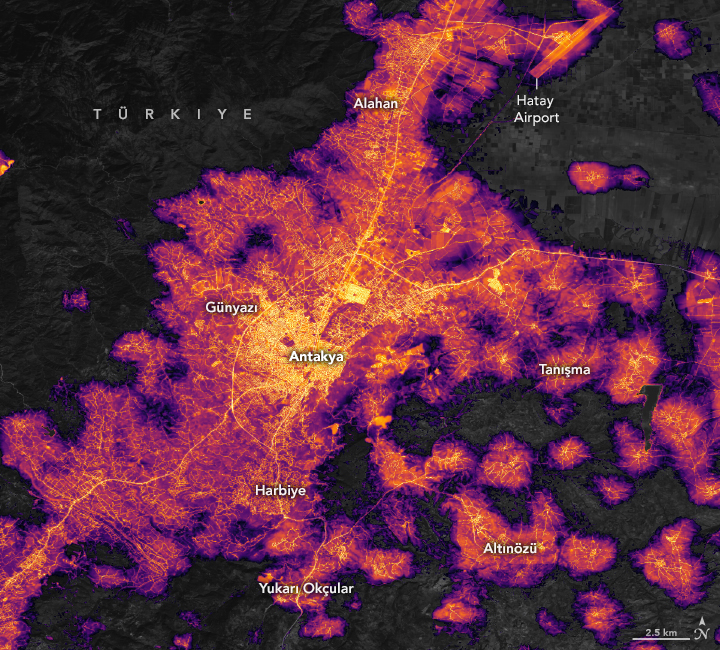



In late April 2023, recovery was still under way almost three months after deadly earthquakes in southeast Türkiye devastated the region’s infrastructure and triggered power outages. But during this time, lights were steadily returning.
The maps above show the amount of light emitted from Antakya—the capital of Türkiye’s Hatay Province and among the hardest-hit areas. On February 8, 2023, two days after the magnitude 7.8 and 7.5 temblors shook the region, parts of the city center and many of the surrounding communities were dark (left). By April 30, 2023 (right), the brightness of outdoor lighting was approaching pre-earthquake levels.
The maps highlight the Black Marble HD product, provided by Ranjay Shrestha of NASA’s Black Marble science team. They are based on data from the Visible Infrared Imaging Radiometer Suite (VIIRS) sensor on the NASA-NOAA Suomi NPP satellite. The basemap was built from data collected by the Landsat 9 satellite.
Several weeks after the initial quakes, power restoration efforts suffered a setback. Shrestha and colleagues point to blackouts that became visible in nighttime light maps after a magnitude 6.4 aftershock on February 20. In the series above, the drop in light is visible between the second and third images. Since then, maps of nighttime lights have shown a steady recovery, which is consistent with an analysis by United Nations Satellite Center (UNOSAT).
“Based on the analysis of the Black Marble images, it appears that power has been restored in most of the urban regions in Antakya,” Shrestha said. He cautions, however, that power restoration alone does not guarantee complete recovery on the ground. Some of the outdoor lighting could still be powered by generators or other sources.
Still, Black Marble nighttime light images serve as an important proxy for the overall recovery. Shrestha explained: “By utilizing Black Marble HD images, we gain a more detailed understanding of how these restoration efforts unfold at a finer scale.”
NASA Earth Observatory images by Lauren Dauphin, using Black Marble data courtesy of Ranjay Shrestha/NASA Goddard Space Flight Center. Story by Kathryn Hansen.